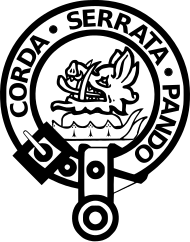
James Hamilton, 1st Lord Hamilton, 6th Laird of Cadzow was a Scottish nobleman, scholar and politician.
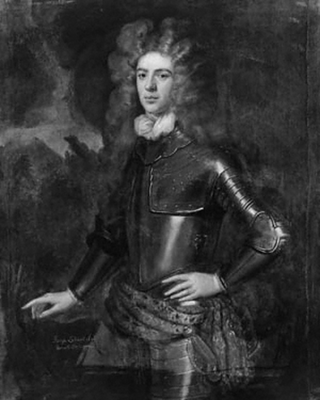
Sir George Lockhart of Lee, of Carnwath, South Lanarkshire, also known as Lockhart of Carnwath, was a Scottish writer and Jacobite politician who sat in the Parliament of Scotland from 1702 to 1707 and as a Tory in the House of Commons from 1708 to 1715. He was a member of the Commission on the Union before 1707 but acted as an informant to his Jacobite colleagues and later wrote an anonymous memoir of its dealings. He supported the Stuart cause in the Jacobite rising of 1715.
Moir ([MOY-er]) is a surname of Scottish origin, and is part of the Clan Gordon of the Scottish Lowlands. The name in its present form dates from the 14th century and means "brave, renowned, mighty" in Scots Gaelic. Four generations of Moirs were active members of the Burgesses & Guild Brethren of Glasgow, 1751-1846.

The Lockharts of Lee are a Lanarkshire family that trace their descent from Sir Simon Locard. The family estate is the barony of Lee, centred on Lee Castle near Lanark, originally built around 1272 but much expanded in the 19th century.

Clan Douglas is an ancient clan or noble house from the Scottish Lowlands.
Sir Kenneth Moir was a champion knight and Knights Templar who, in 1330, rode with James Douglas, Lord of Douglas and the Crusaders to Spain with the heart of Robert the Bruce to defeat the Moors who had laid siege to the fortress at Battle of Teba in Andalusia.
James Lockhart of Lee and Carnwath, Count Lockhart-Wishart (Wischeart) of the Holy Roman Empire was a Scottish aristocrat with a successful military career.

The Clan MacLellan is a Scottish clan of the Scottish Lowlands. The clan does not currently have a chief therefore it is considered an Armigerous clan.

Clan Carmichael is a Scottish clan and is also considered a sept of the Clan Douglas, Clan MacDougall, Stewart of Appin, and Stewart of Galloway.
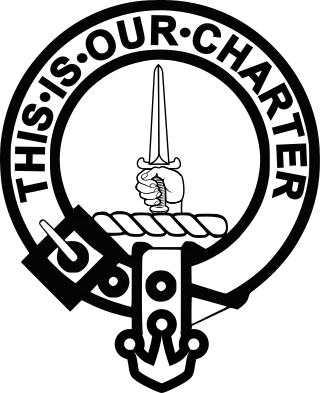
Clan Charteris is a Scottish clan of the Scottish Lowlands.

Clan Crichton is a Lowland Scottish clan that historically ruled Dumfries.
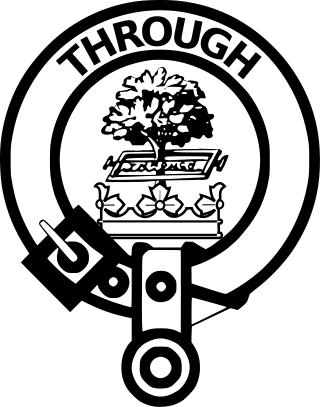
The Clan Hamilton, or House of Hamilton, is a Scottish clan of the Scottish Lowlands.

Clan Logan is a very ancient Scottish clan of Celtic origin. Two distinct branches of Clan Logan exist: the Highland branch; and the Lowland branch. The clan does not have a chief recognised by Lord Lyon King of Arms, and therefore can be considered an armigerous clan.
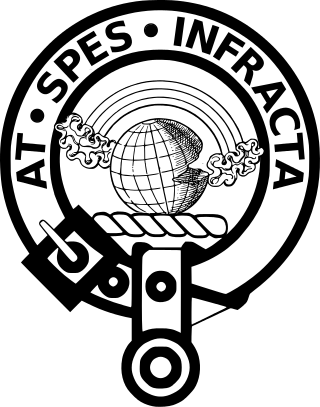
Clan Hope is a Scottish clan of the Scottish Lowlands.

Sir George Lockhart of Carnwath was a Scottish advocate, judge and commissioner to parliament who was murdered.

Clan Kirkpatrick is a Lowland armigerous Scottish clan. There are several variations of the Kirkpatrick name: Kilpatric, Kilpatrick, and Gilpatrick. The names Kirkpatrick and Kilpatrick may have been interchangeable at one time. The clan is recognised by the Court of the Lord Lyon, however the clan does not currently have a chief so recognised. The surname Kirkpatrick is also a recognized sept of Clan Douglas and Clan Colquhoun.

Sir Symon Locard, 2nd of Lee (1300–1371) was a Scottish knight who fought in the Wars of Scottish Independence. According to Lockhart family tradition, he accompanied Sir James Douglas in their curtailed attempt to carry the heart of Robert the Bruce to the Holy Land in 1330.

Lee Castle, also known as The Lee, is a castellated mansion in Auchenglen, a branch of the Clyde Valley in South Lanarkshire, Scotland. It is located 1.5 kilometres (0.93 mi) south of Braidwood, and 4 kilometres (2.5 mi) north-west of Lanark. Lee was the seat of the Lockharts of Lee from its establishment in the 13th century until 1919, though the present house is the result of rebuilding in the 19th century.
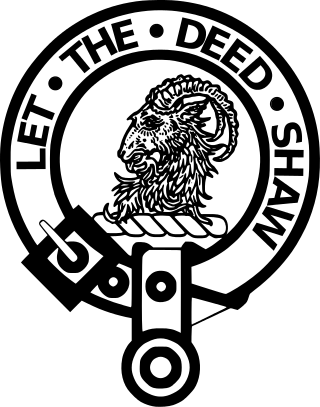
Clan Fleming is a Lowland Scottish clan and is officially recognized as such by the Lord Lyon King of Arms. However, as the clan does not currently have a chief that is recognized by the Lord Lyon King of Arms it is therefore considered an armigerous clan.
Sir James Lockhart, Laird of Lee was a Scottish courtier, politician and judge, and a royalist commander of the Wars of the Three Kingdoms.
